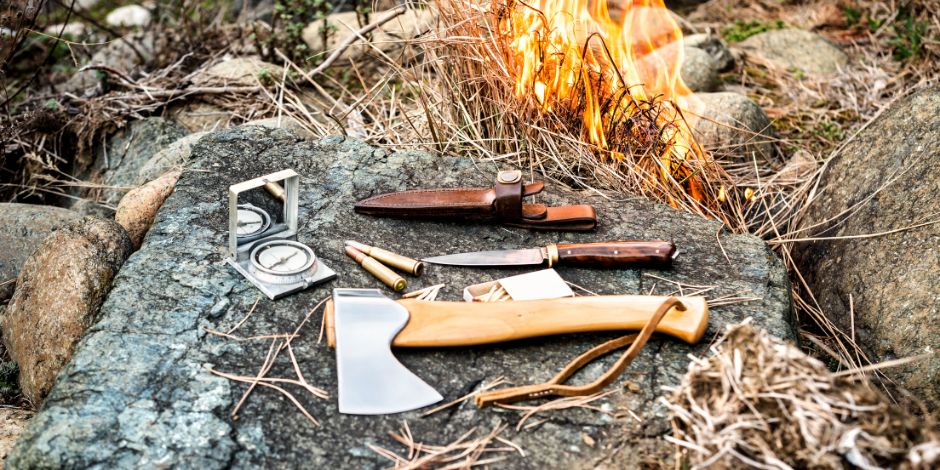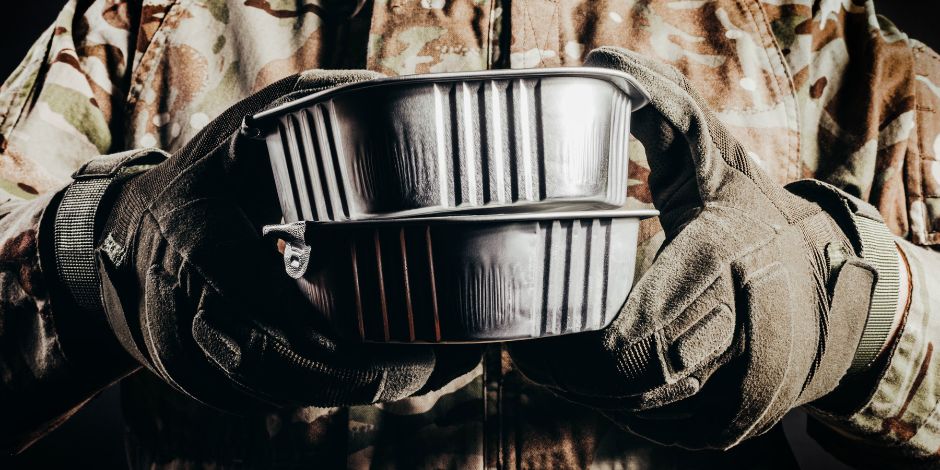US Army M561 Gama Goat
The "Gama Goat": the US Military's Quirky, High-Mobility M561
In the long, sometimes strange, history of military vehicles, few stand out quite like the M561 Gama Goat. This six-wheeled, semi-amphibious truck, with its peculiar articulated design, was conceived to conquer the toughest terrain. While it earned a reputation for exceptional off-road prowess, it also became infamous for a host of mechanical and operational quirks.
If you love Cold War-era military history and unique engineering, read on to delve into the saga of the vehicle affectionately, and sometimes derisively, known as the "Goat."
Born for the Bog
The genesis of the Gama Goat lies in the US Army's need for a highly mobile, air-transportable 1 1/4-ton cargo truck capable of navigating the challenging, muddy, and often swampy environments found in places like Vietnam.
The key to the Gama Goat's design was its unique two-unit, six-wheel-drive structure: a four-wheeled front-driving unit (tractor) connected to a two-wheeled rear-driving unit (trailer) by a flexible, articulated joint. This setup allowed for an astonishing degree of articulation—up to 15 degrees of roll between the units and 30 degrees of roll on the rear axle. The result was a vehicle that could literally scramble over obstacles, earning it the "Goat" nickname for its mountain-goat-like agility.
What's in a Name?
The "Gama" part of the name is a direct tribute to its primary designer, Roger L. Gamaunt, who had been developing the articulated vehicle concept since the late 1940s. The production contract for the M561 was ultimately awarded to Consolidated Diesel Electric Company (CONDEC), with final vehicles rolling off the assembly lines between 1968 and 1973.
The Double-Edged Sword of Engineering
When it came to off-road performance, the Gama Goat was a beast. Its incredible flexibility and six-wheel drive allowed it to tackle terrain that would stop a conventional truck dead in its tracks. However, its complex engineering proved to be its Achilles' heel:
-
Maintenance Nightmare: With around 22 universal joints in its drivetrain, the complex articulated system was a constant source of problems. Maintenance was notoriously difficult and time-consuming.
-
The Noisy Diesel: The production M561 was powered by a three-cylinder Detroit Diesel 353 engine. While powerful, this two-stroke engine was incredibly loud with the added fact the engine is located just behind the drivers head. This often requiring drivers to wear hearing protection and making on-the-move radio communication nearly impossible.
-
Quirky Steering: The M561 was one of the few vehicles where all six wheels steered—the front and rear wheels turning in opposite directions. While this provided a surprisingly tight turning radius, it made the vehicle difficult and twitchy to handle on paved roads.
-
Amphibious...ish: Though designed to be semi-amphibious, its swimming ability was limited to calm water, with propulsion provided only by the spinning wheels. Leaky tailgates and the low freeboard meant that any significant load or choppy water could quickly turn an aquatic mission into a sinking disaster.
Maintenance Procedures & Lubricants
The M561 was famous (or infamous) for demanding extensive and frequent maintenance, which typically involved following the military's Lubrication Order (LO 9-2320-242-12). The military even produced a comic-book style pamphlet called DA Pamphlet 750-31 to help operators understand the Preventive Maintenance Checks and Services (PMCS).
Common Maintenance & Fluids
Given the complex articulated drivetrain, the lubrication order was extensive, taking some operators up to six hours to complete.
| Component | Procedure/Issue | Military Fluid/Modern Equivalent |
| Engine (Detroit Diesel 3-53) | Regular oil changes and cooling checks. Engine noise and cooling problems were common. | Engine Oil: SAE30 or we recommend Ring free DD40 |
| Drivetrain (Transfer Case, Differentials) | Frequent lubrication of universal joints (U-joints) and checking for water intrusion (especially after amphibious use). The transfer case was known to run low on oil. | Gear Oil: A heavy-duty GL-5 specification gear oil is required for the differentials and transfer case. |
| Articulation Joint | Regular greasing of all fittings on the central articulation joint. | Grease: Typically a multi-purpose lithium-based chassis grease (Moly-EP or MP grease). |
| Brakes | The outboard drum brakes were complex to bleed and adjust. | Brake Fluid: DOT 3 or DOT 4 fluid. |
The sheer number of lubrication points, especially across the six independent wheel ends and the articulation joint, is what made the maintenance so time-consuming.
Civilian Road-Use Modifications
Converting a Gama Goat for regular civilian street use requires addressing its two biggest flaws: highway handling (due to the four-wheel steering) and driver comfort (due to the noise and lack of safety features).
1. Handling and Safety Upgrades
-
Brake System Improvements: This is critical. Converting the original outboard drum brakes to a modern disc brake system improves stopping power, greatly reduces maintenance complexity, and eliminates the difficulty of adjusting and bleeding the old drums.
-
Steering Modification: The quirky four-wheel steering makes the Goat a handful at highway speeds. Some owners modify the steering linkage to lock out or disable the rear axle steering for on-road driving, significantly improving stability.
-
Tandem Master Cylinder: Upgrading to a tandem master cylinder is a modern safety improvement to ensure that if one brake circuit fails, the other remains functional.
- Replacing the older style Glass bowl type Oil filter with new screw on type
-
Safety Features: Installing modern seat belts and shoulder harnesses is highly recommended, as is upgrading the original, rudimentary lighting with brighter bulbs and modern signal lenses.

2. Comfort and Noise Reduction
-
Insulation and Hardtop: The loudest component is the Detroit Diesel $3\text{-}53$ engine, which sits in a box directly behind the driver. Installing a fully insulated hardtop and cab enclosure drastically reduces the noise compared to the original canvas cover. Additional sound-deadening material applied to the cab floor and engine box is a necessity.
-
Better Seating: The original fiberglass seats are uncomfortable for long trips. Replacing them with modern, suspension-style seats greatly improves the ride quality.
-
Power Steering: While not originally equipped, adding a modern power steering system makes low-speed maneuvering and off-road driving much less physically demanding.
3. Drivetrain Reliability
-
Automatic Greasing System: Considering the $\sim 22$ U-joints and numerous grease points, installing a commercially available automatic or central greasing system can save countless hours of manual lubrication.
-
Transfer Case Oil Pump: An electric auxiliary oil pump can be fitted to the transfer case to ensure proper lubrication and combat issues where the original system would sometimes lose prime.
Retirement and Legacy
The Gama Goat served with the US Army and Marine Corps through the Vietnam War, into the Cold War, and even saw action in the invasion of Grenada in 1983. However, its high maintenance requirements, noise level, and operational challenges made it generally unpopular with the troops.
By the late 1980s, the M561s were phased out, largely replaced by the arrival of the venerable High Mobility Multipurpose Wheeled Vehicle (HMMWV), or Humvee.
Today, the Gama Goat remains a fascinating, if flawed, chapter in military vehicle design. It was a bold experiment, a testament to what complex engineering could achieve in high-mobility transport. While its service was fraught with challenges, it ultimately paved the way for the next generation of highly capable military transport vehicles. You can still find these remarkable machines today, often sold as surplus vehicles (for example, at MilitaryMart).
What are your memories of the M561 Gama Goat? Did you ever drive one, or perhaps see one in action? Share your stories in the comments below!















Leave a comment